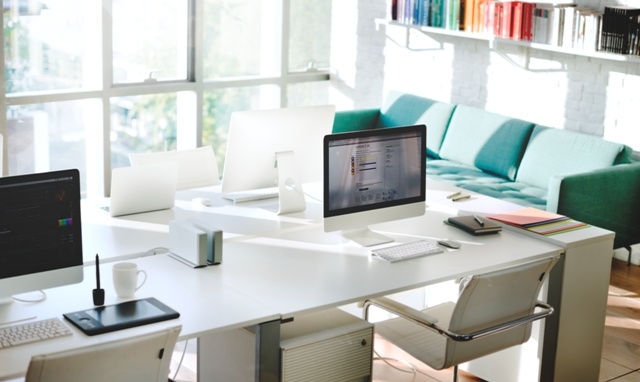Computers and Office Equipment
- Shut your computer down when not in use to save electricity and reduce wear on your system.
- Use a power bar with an integrated timer to shut off all devices and save on “phantom power” or “standby power”, the electricity that’s used by electronic devices even when turned off.
- When replacing your computer, look for an ENERGY STAR qualified model which is 15 to 40% more efficient than older models.
- Laptops use less energy than desktop models.
- Choose a flat-panel LCD computer monitor rather than a regular cathode ray tube (CRT) monitor. Flat-panel liquid crystal display (LCD) monitors use less electricity than comparably sized CRT models. Remember, the bigger the monitor, the more energy it uses.
- Make sure any computer you purchase has an automatic power-down function that will automatically switch the monitor into sleep mode (preferably a deep sleep mode) after a preset period of inactivity. (A feature mandatory to bear the ENERGY STAR symbol).
- Ink-jet printers use 90% less energy than laser printers.
- A screen-saver doesn’t save energy.
Tips at the Office
- Be sure to always turn the equipment and lights off after hours.
- Unplug coffeemakers, toasters and microwaves before shutting the office down at the end of the day, weekends or holidays.
- Take advantage of the sun. Open shades and blinds during daylight hours. Let the sun heat and light your space naturally; shade it when it’s hot, of course. In the winter, close your blinds and drapes in the evening.
- Whenever possible, choose ENERGY STAR qualified products.
- Take the time to set the energy-saving features on all of your office equipment to put them into sleep mode when not in use.
- Shut off all “the nice to have’s” such as outside advertising billboards and signage, decorative fountains, pools and waterfalls.
- Dress comfortably for the weather. Adjust your layers before adjusting the thermostat.
- Use revolving doors to access entrances. It keeps cool/hot air inside.
- Keep entrance doors closed.
- Take the stairs instead of the elevator.

